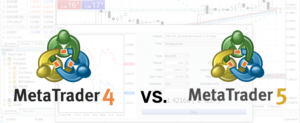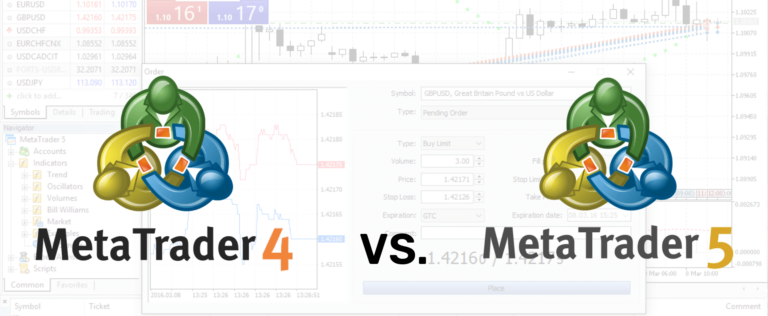The forex market is the biggest and most liquid market to trade. For traders, this represents an opportunity to benefit from changing currency prices. Major and minor pairs often take centre stage, but there is a third category that can provide trading opportunities. These are called exotic currency pairs.
Quick facts
- Forex is traded in pairs, with the first currency as the “Base Currency” and the second as the “Quote Currency.”
- They can be classified as major, minor, and exotic pairs.
- Exotic currency pairs are less commonly traded pairs. They involve a major currency against the currency of an emerging market.
- These pairs can be highly volatile, representing potential opportunities for traders.
Table of Contents:
Major, Minor, and Exotic – What’s The Difference?
In forex, currencies are always traded in pairs. Each forex trade involves the simultaneous buying of one currency while selling another. These currencies are quoted in pairs, with the first currency being the “base currency” and the second being the “quote currency.”
For example, in the pair EUR/USD, EUR is the base currency, while USD is the quote currency.
The value of a currency pair represents the amount of the quote currency needed to buy one unit of the base currency.
Major Currency Pairs
The most heavily traded and widely recognized currencies in the world comprise major currency pairs.
- They always include the US Dollar (USD) as one of the paired currencies.
· Major currency pairs represent the largest portion of forex trading volume, making up most market activity.
· These pairs tend to have high liquidity, and tighter spreads and are popular among both retail and institutional traders.
· Examples include:EUR/USD Euro/US Dollar USD/JPY US Dollar/Japanese Yen GBP/USD British Pound/US Dollar USD/CHF US Dollar/Swiss Franc USD/CAD US Dollar/Canadian Dollar AUD/USD Australian Dollar/US Dollar
Minor Currency Pairs
Minor currency pairs, or crosses, represent currency pairs from major economies other than the US.
- They don’t involve the US Dollar (USD) as one of the paired currencies.
- While they have lower trading volumes compared to major pairs, they are still relatively liquid and actively traded.
- Examples include:
EUR/GBP Euro/British Pound EUR/JPY Euro/Japanese Yen GBP/JPY British Pound/Japanese Yen AUD/JPY Australian Dollar/Japanese Yen EUR/AUD Euro/Australian Dollar CAD/JPY Canadian Dollar/Japanese Yen
Exotic Currency Pairs
Exotic currency pairs include one major currency paired with the currency of an emerging or smaller economy.
- These pairs are less commonly traded and have lower liquidity compared to major and minor pairs.
- Exotic pairs are associated with countries from regions like Asia, Africa, the Middle East, or South America.
- They are characterised by higher bid-ask spreads and increased volatility.
- Examples include:
USD/TRY US Dollar/Turkish Lira EUR/TRY Euro/Turkish Lira USD/ZAR US Dollar/South African Rand USD/THB US Dollar/Thai Baht USD/MXN US Dollar/Mexican Peso EUR/HUF Euro/Hungarian Forint
What Are Exotic Currency Pairs?
Exotic pairs are less liquid and less commonly traded. They are made up of one major currency paired with the currency of an emerging or less-established economy.
Exotic currencies don’t enjoy the high liquidity benefits of trading major forex pairs. However, they tend to experience higher price fluctuations, giving traders an opportunity to take advantage.
Examples of Exotic Currency Pairs
Unlike major pairs, which feature currencies of major economies like the USD, EUR, JPY and GBP, exotic pairs include currencies from more discrete regions.
Some examples include USD/TRY (US Dollar/Turkish Lira), EUR/TRY (Euro/Turkish Lira), and USD/ZAR (US Dollar/South African Rand).
What You Should Know Before You Start Trading
While exotic pairs represent a potentially lucrative opportunity, don’t go in with your eyes closed. Understand the pros and cons of trading exotic pairs to make a well-informed trading decision.
Advantages Of Trading Exotic Pairs
- Unique opportunities: Exotic pairs can offer unique trading opportunities that may not be available in major pairs. Geopolitical events, economic developments, or unexpected news in emerging economies can lead to substantial price movements.
- Potential for high returns: The increased volatility in exotic pairs can lead to significant price swings, providing the potential for high returns on successful trades.
- Portfolio diversification: Including exotic currency pairs in a diversified trading portfolio can serve as a risk management strategy. Further, these pairs can also offer an additional opportunity when major pairs show stagnant price movements.
Disadvantages Of Trading Exotic Pairs
- Higher costs: The lower liquidity in exotic pairs results in wider spreads and higher transaction costs, which can eat into potential profits.
- Increased risk: The higher volatility of exotic pairs can expose traders to magnified profit potential, but similarly, magnified risk or loss as well.
- Limited market insight: Information and analysis on exotic currencies may be scarce compared to major pairs.
How To Start Trading Exotic Currency Pairs
If you’re looking to diversify your portfolio or expand your forex trading activity by including exotic pairs, here is how you can get started:
- Get a trading account: You will need a trading account to give you access to the forex markets, through which you will be able to place trading orders. Hantec Markets offers easy account sign-up, with access to MetaTrader 4 and 5.
- Do your research: Explore different exotic pairs, research their economies, and investigate the political, economic, and social factors that could influence their exchange rates. As a result, you will be able to narrow down a list of pairs to include in your portfolio.
- Plan how you will manage your risk: Given the higher volatility, implement risk management practices, such as setting stop-loss orders and avoiding over-leveraging your capital. Find out more through our tips and tools to manage your risk.
- Start trading! Use your technical and fundamental analysis skills and start trading the price movements of your selected exotic currency pairs.
- Keep an eye on news and events: Closely watch news and economic events in the countries related to the exotic pairs. Unexpected developments can have a significant impact on their exchange rates.
Remember to track your performance so you can learn from it and continuously improve your trading skills as you navigate the exciting world of exotic currency pairs.
Want to learn more about trading forex? Read our beginner-friendly forex trading guide.
Frequently Asked Questions
Q: What are some examples of popular exotic pairs?
A: Popular exotic pairs include USD/SGD (US Dollar/Singapore Dollar), USD/THB (US Dollar/Thai Baht), and EUR/HUF (Euro/Hungarian Forint).
Q: What are the main factors that drive volatility in exotic currency pairs?
A: The volatility in exotic currency pairs is primarily influenced by several factors. These include political instability, economic conditions, interest rates, commodity prices, and geopolitical events. Any unexpected developments in these areas can lead to shifting price movements.
Q: Are there specific times during the day when exotic currency pairs are more active for trading?
A: The trading activity in exotic pairs may vary depending on the respective countries’ trading hours. For example, pairs involving Asian currencies might experience increased activity during the Asian trading session. Similarly, pairs involving African or South American currencies could be more active during European or American trading hours.
Q: Can I trade exotic currency pairs with Hantec Markets?
A: Yes, you can trade exotic pairs with your Hantec Markets account. To discover which pairs you can trade, open an account, or reach out to our customer support via Live Chat.
Q: What are the best trading strategies for exotic currency pairs?
A: Effective trading strategies for exotic pairs tend to involve a combination of technical and fundamental analysis. Traders may use chart patterns, technical indicators, and support/resistance levels for technical analysis. For fundamental analysis, keeping track of economic indicators, interest rate decisions, and political developments is crucial to understanding potential price movements.















